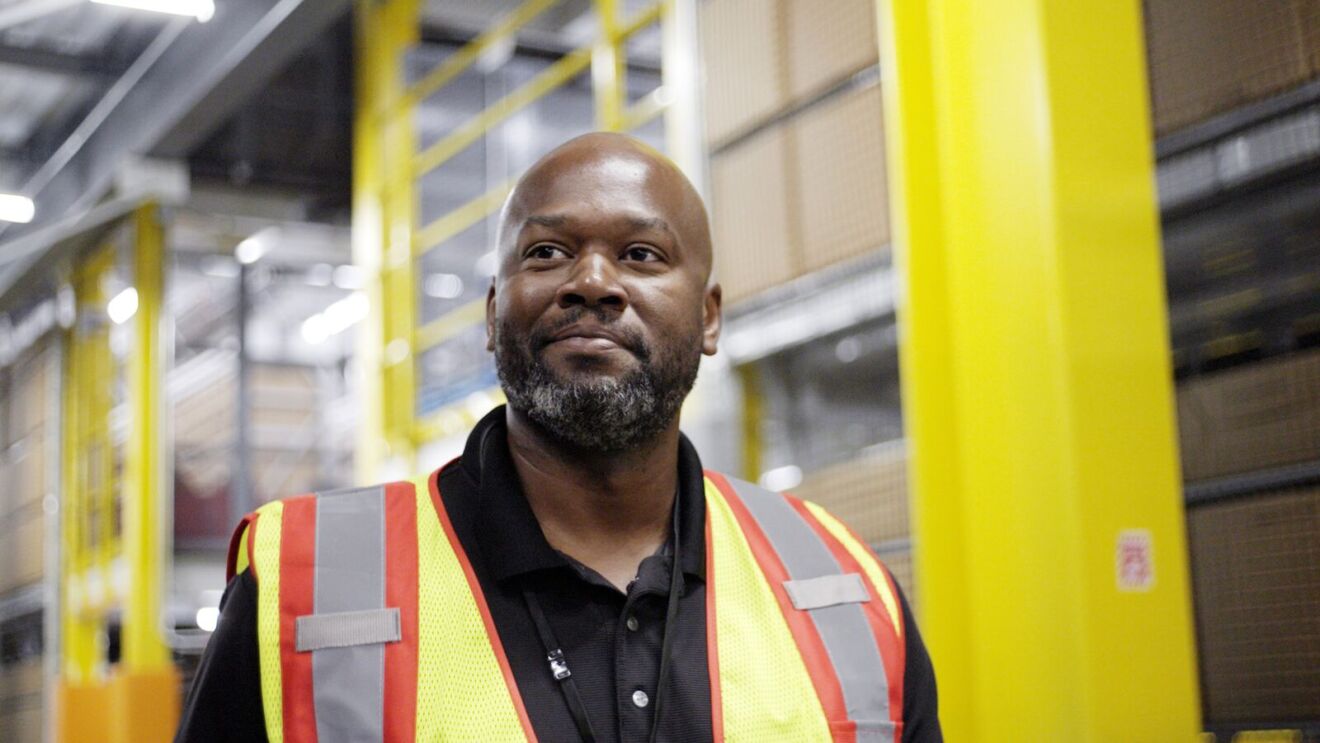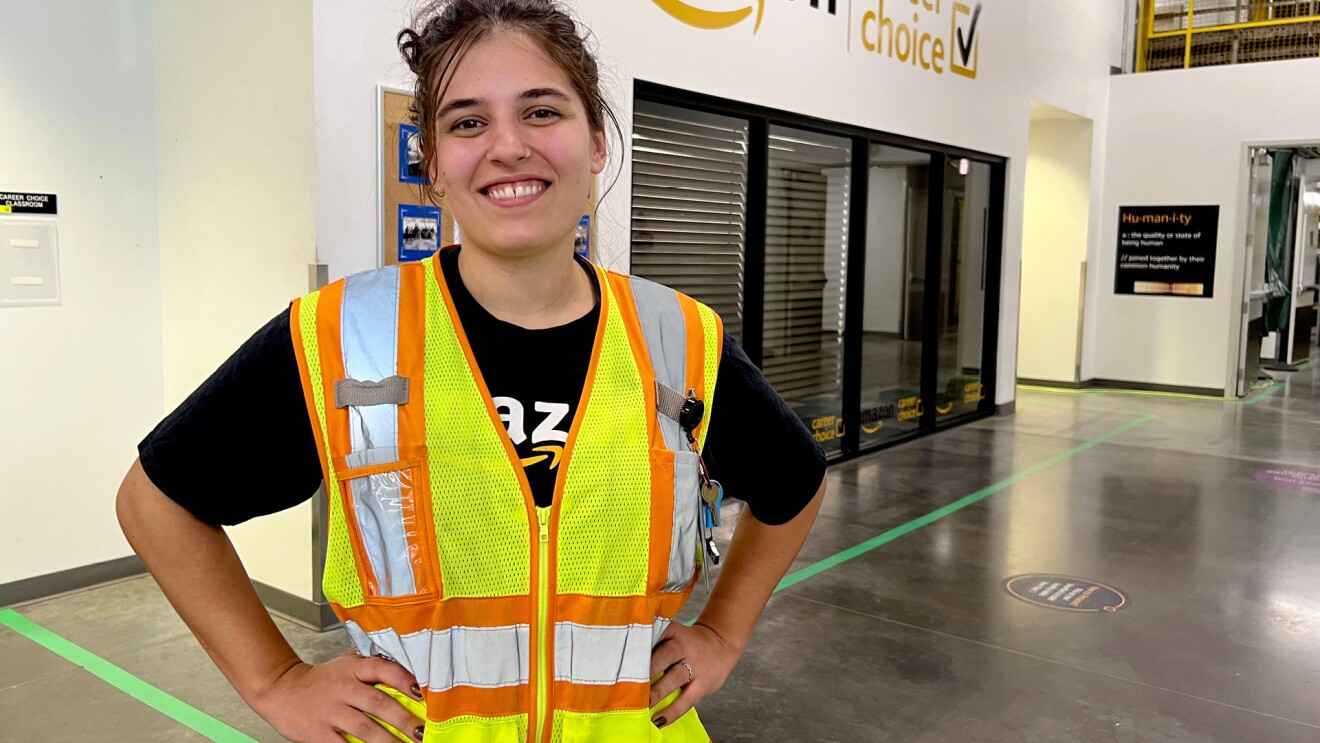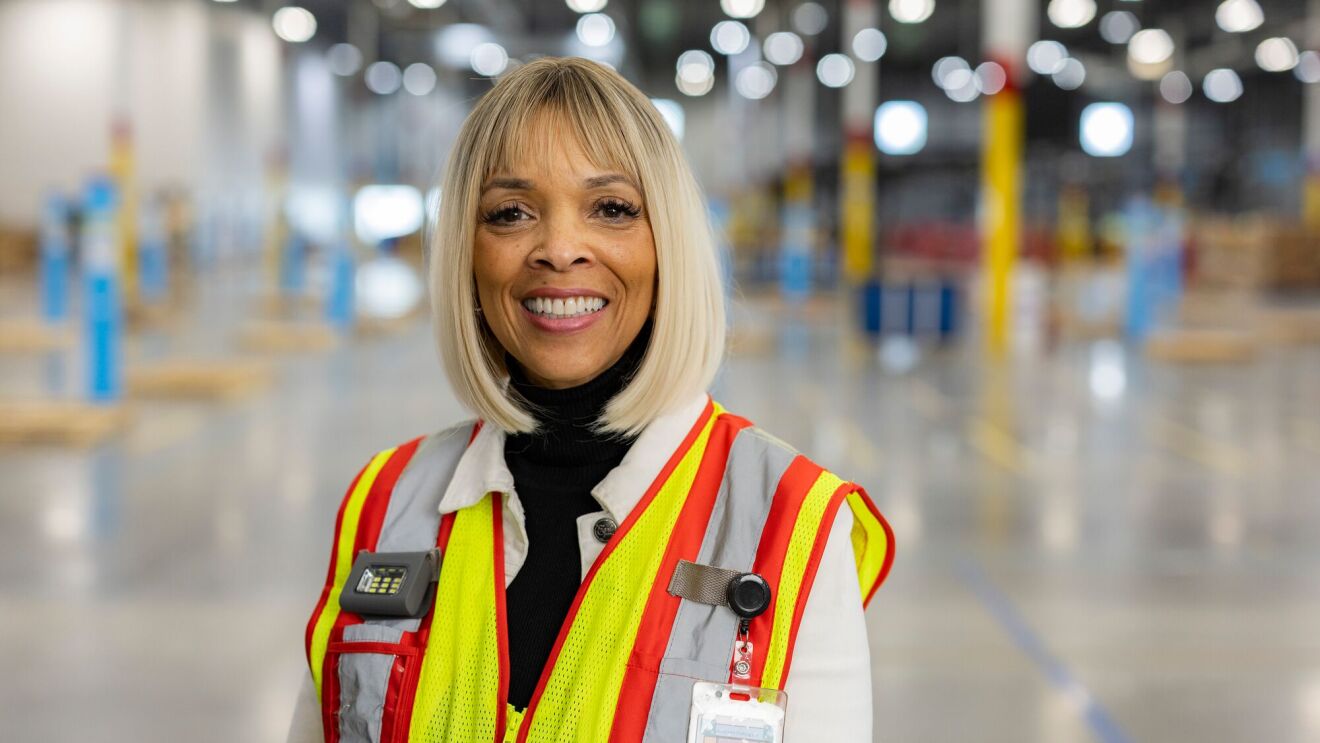Across the United States, National Skilled Trades Day is held on May 3 to recognize skilled tradespeople and increase awareness of opportunities in the skilled trades. To celebrate, we’re highlighting some of the individuals behind our operations who have pursued technical careers in areas like robotics and manufacturing, and the paths they took to get there.
Learning trade skills often requires extensive training or schooling, but Amazon provides employees on-the-job learning opportunities and apprenticeships. "Filling the technical skills gap is imperative to building a trained workforce that can enable smarter, safer, and better-optimized operations," Amazon Vice President of Robotics Scott Dresser said. "Offering employees opportunities to learn new trades—and the skills needed for the jobs of today and the future through on-the-job training and education—is something we're really proud of at Amazon."
“We encourage companies and academic institutions to be thinking about new ways to help people find new skills and passions,” Dresser added. “Our robotics team is just one example of many teams working in technical and skilled trades that are delivering every day for customers around the globe."
Since we introduced robotics into our facilities in 2012, we have deployed more than 750,000 robotic drive units worldwide, creating hundreds of thousands of new jobs as a result. Through these roles, we provide opportunities for employees to move into higher-paying jobs, pursue new career paths, and learn skills that are highly desirable within and outside of Amazon.
Learn more about the people behind these skilled roles.
Working with robots
Elizabeth Schneider was 19 when she dropped out of a traditional university to join the skilled trades. Ten years later, she’s working on the robotics floor at an Amazon Air hub in Erlanger, Kentucky.
“It’s easy to forget how cool your job is. Having robotics here at our site is so unique and reminds me why I chose this path,” Schneider said. “Robots are a tool for humans, not a replacement. Humans are essential to the function of these robots.”
Schneider is passionate about her field, especially when it comes to encouraging women to join the skilled trades. She hopes that more people explore the skilled trades so they can experience the kind of satisfaction that it brings to her.
“This is a field that's always growing, and we need good, skilled people. I'm incredibly proud of myself. Looking back at that 19-year-old who just dropped out of college, I never would've thought that I'd be so successful and good at my job just 10 years later,” Schneider said. “I have a really good work-life balance too. I work four 10-hour shifts, and then I really get to enjoy my three days off every week.”
From associate to area manager
Since joining Amazon as an entry level associate when he was 19, Kory Sellers has been promoted several times and took advantage of on-the-job training, including a course working with robotics. He now oversees a team of more than 80 associates as an area manager in Charlotte, North Carolina.

“I was always interested in robots, even as a young kid watching movies, and it made me want to check out what Amazon Robotics had to offer,” Sellers said.
Sellers said he challenges himself to learn more every day. He said his only regret is not joining Amazon sooner to take advantage of the skilled trades course and other training.
“It’s amazing that Amazon gives people the opportunity to grow their skills and careers at no cost to themselves. The on-the-job training is great, and it’s easy to learn. The hardest part is challenging yourself to put yourself out there and complete the courses.”
Learning new skills
Kelly Monroe had a unique path to landing a technical role at Amazon. Monroe began working at Amazon as a part-time associate and transitioned to full-time work after raising her two children. She then enrolled in Amazon’s Mechatronics and Robotics Apprenticeship (MRA), which offers paid classroom and on-the-job learning for employees to gain the skills needed to become a maintenance engineer in Amazon robotics sites.
During the program, which is fully paid, apprentices learn skills like industrial electricity, mechanical components, fluid power, and programmable logic controllers. Amazon offers a variety of technical and non-technical skills training to employees for free to help them pursue a variety of career paths and opportunities to learn skilled trades.
In fact, Amazon has committed to invest more than $1.2 billion by 2025 to provide employees with the education and skills training they need to build successful careers.
Monroe, through the MRA program and a combination of classroom instruction and on-the-job learning, earned four additional technical certifications. She is now a mechatronics and robotics junior technician in Dallas, Texas.
“As a kid, I was always interested in technology and had a passion for taking things apart and putting them back together again. Now I’m doing what I have always dreamed of doing as a career, and it’s awesome. It’s never too late to try something new and challenge yourself,” Monroe said.
Amazon is constantly inventing new technologies and identifying opportunities for employees to learn new skills. We encourage other companies to consider ways to celebrate and invest in their employees to promote continued learning and development.
Trending news and stories












